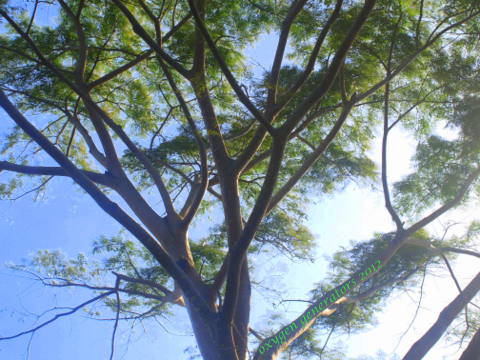above honey bee is our native Apis cerana, which produce a wonderfully-tasting honey
This plant has been here at the side of our garden for more than 20 years now! It never fails to produce profuse blooms every year for our dry season, in time for the Flores de Mayo or Santacrusan, which needs flowers to offer the Virgin Mary every night for the whole month of May. In this picture, it provided a good foreground for a jackfruit tree that is balding and unsightly. Even the sunbirds come here and get their share of the much coveted nectar.
orange Crossandra infundibuliformis
red Crossandra infundibuliformis
Hipeastrum puniceum
This amaryllis is dormant during the dry season, grows again when the first heavy rains arrive. It produces the flowers first and followed by the leaves. We have hedges of this in the property in the province, and i have posted it in last years posts. Normally, this happens in June, when the climate has not changed yet. This time the early afternoon rains, although only once was heavy enough to break its dormancy. So we got the early flowers, although the blooms are not as profuse and simultaneous as during the previous years.
The red hibiscus is present all year round, come rain come shine. But this time a little rain gave it some boost to produce greener leaves with more and bigger flowers. It is so beautiful as a cover for the lower trunks/branches of the mussaenda, as in the lower photo.
This is the full picture of the complimentary show of the red hibiscus and orange mussaenda. At the back left is a golden shower tree which did not produce flowers now, because it suffered heavy pruning. It would have been more beautiful if the 3 colors are simultaneously blooming.
I noticed last week that most of our flowers these dry season are orange and red. I wonder what that means for the Flower Kingdom. The rest which i did not include here like Clerodendrum intermedium, Sanchezia and Euphorbia millii are also orange and red. Our yellows cannot withstand the waterless soil and extreme heat. Other colors are not available as well. I really wonder why. The only outlier is the blue Duranta erecta, but the flowers are so limited unlike during the rainy season. What are left are mostly the orange berries, orange again! Even the Florida beauty has the orange and red berries.
Oh, there is one color interrupting all the orange-red color predominance, the off-white flowers of the corn plant or fortune plant, Dracaena fragrans. This is the only non-orange-red in our garden.

















.jpg)































